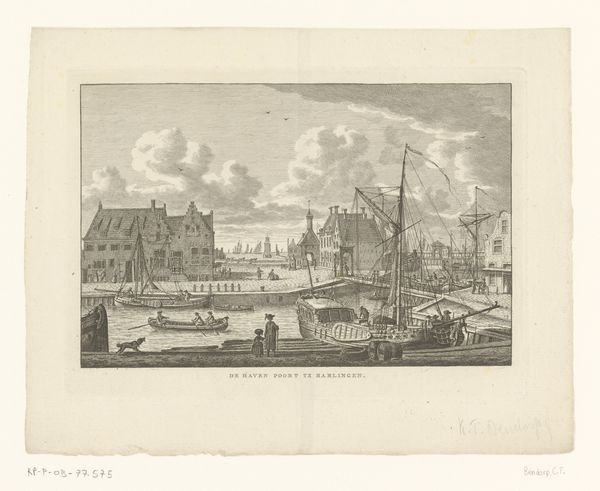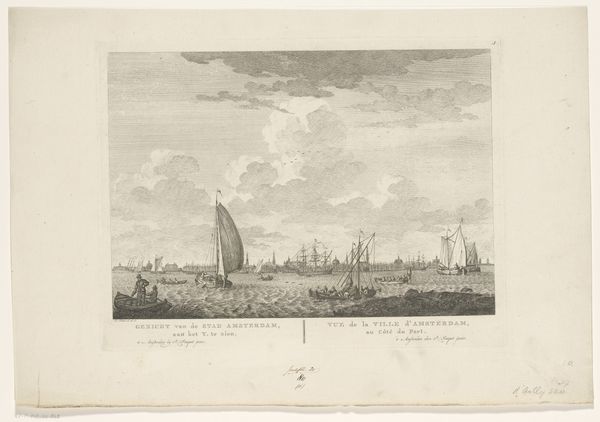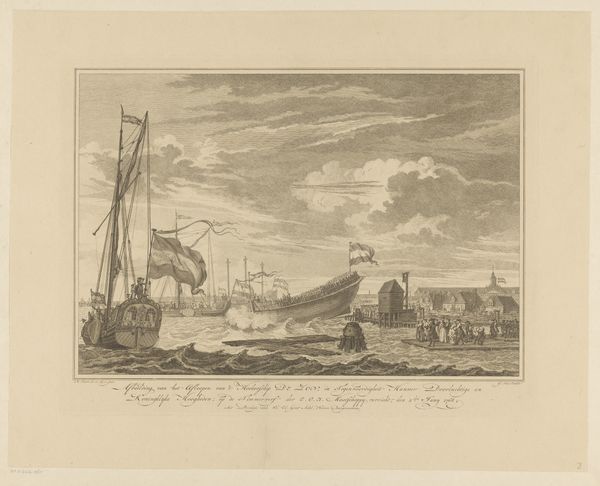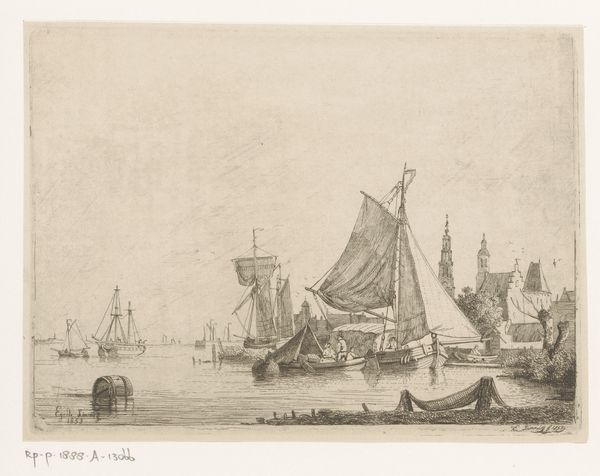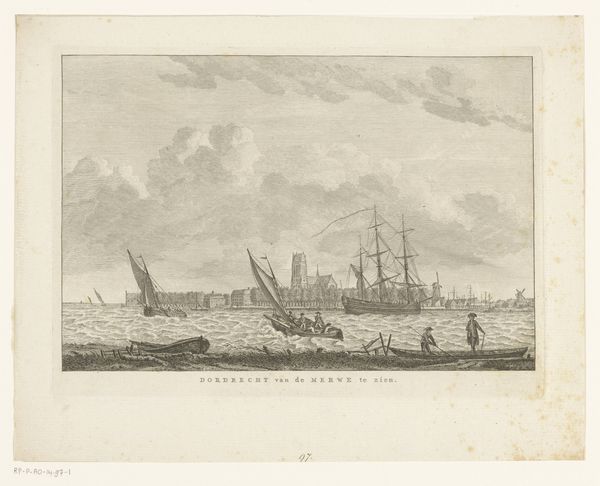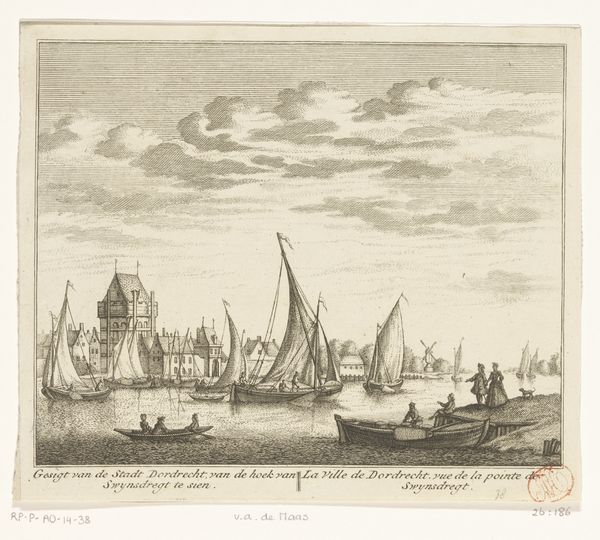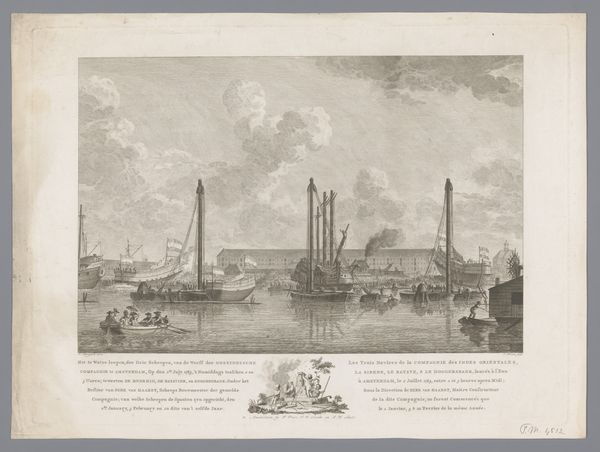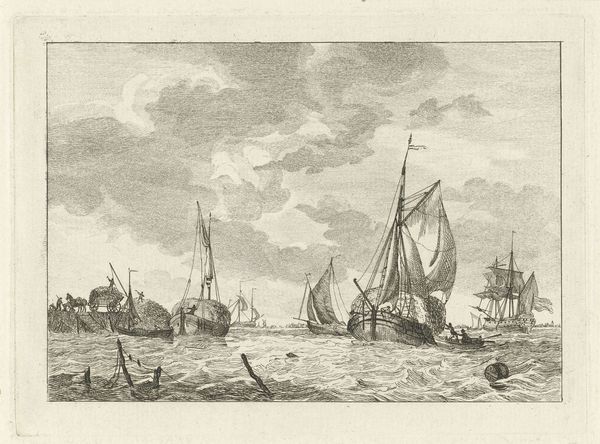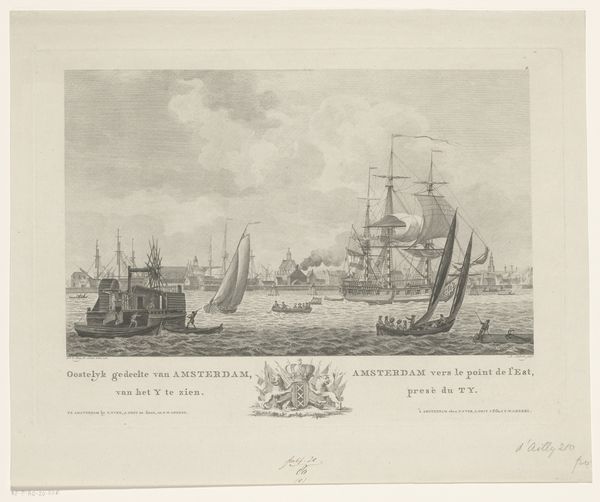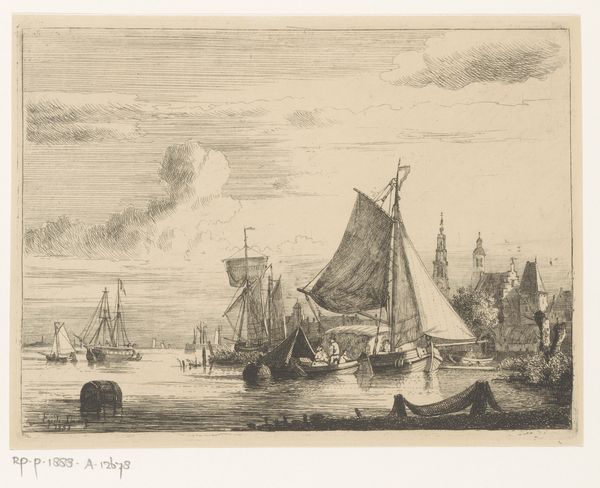
Gezicht op de Kattenburgergracht te Amsterdam met de ligplaats voor schepen c. 1695 - 1700
comic strip sketch
light pencil work
page thumbnail
old engraving style
traditional media
personal sketchbook
sketchwork
sketchbook drawing
pencil work
storyboard and sketchbook work
Dimensions: height 171 mm, width 203 mm
Copyright: Rijks Museum: Open Domain
Curator: This is an interesting print, isn’t it? “Gezicht op de Kattenburgergracht te Amsterdam met de ligplaats voor schepen,” made around 1695-1700 by an anonymous artist. It's currently held at the Rijksmuseum. The detail in this work is striking. Editor: It really is! I am initially struck by the sheer number of ships; they seem almost crammed into the harbor. It gives me a sense of bustling activity but also perhaps of maritime power. What do you see in this piece? Curator: The composition offers us a critical lens through which to view the Netherlands during its Golden Age. What seems like a simple depiction of a harbor is actually a potent symbol of Dutch economic and colonial expansion. Consider the ships themselves: they weren't merely trading vessels; they were instruments of power, used to extract resources and exert control in far-off lands. How does viewing this image with the awareness of that historical context shift your perception? Editor: It makes me a bit uneasy, actually. I initially saw beauty and skillful rendering, but now I also see the potential for exploitation and violence embedded in the scene. The “maritime power” I noted comes with a lot of baggage. Curator: Precisely. And look at the implied absence in the image. The print focuses on Dutch prosperity and activity, but where are the people and resources being extracted from? Whose stories are missing here? Reflecting on these questions allows us to understand how representations of maritime power contributed to a carefully constructed national identity, often at the expense of marginalized communities around the world. Editor: So it’s about understanding not just what’s visible, but what the image purposefully leaves out. That's a really powerful point. Curator: Exactly. By examining these visual narratives through an intersectional lens, we can critically engage with the legacies of colonialism and understand how these power dynamics continue to shape our world today. Editor: Thank you. I hadn't thought about it in such broad terms, but it really reframes how I see the artwork now.
Comments
No comments
Be the first to comment and join the conversation on the ultimate creative platform.
